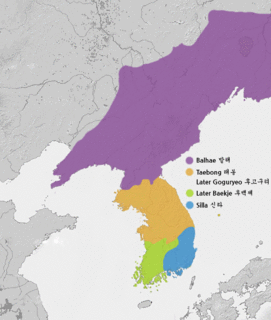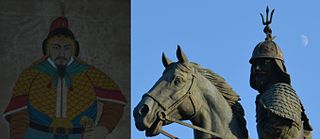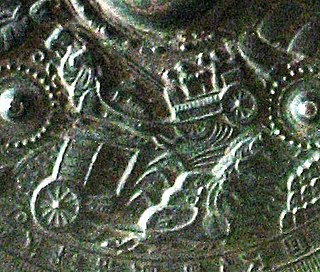| Byeolmuban | |
| Hangul | 별무반 |
|---|---|
| Hanja | 別武班 |
| Revised Romanization | Byeolmuban |
| McCune–Reischauer | Pyǒlmuban |
Byeolmuban is the name of a special army unit in the time of Korea's Goryeo Dynasty (918–1392). The word byeol literally means star, but also has the meaning of special. Founding of the army was initiated by Yun Gwan during the reign of king Sukjong of Goryeo.
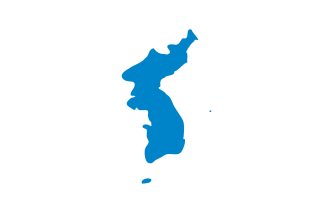
Korea is a region in East Asia. Since 1948, it has been divided between two distinct sovereign states: North Korea and South Korea. Korea consists of the Korean Peninsula, Jeju Island, and several minor islands near the peninsula. Korea is bordered by China to the northwest, Russia to the northeast, and neighbours Japan to the east by the Korea Strait and the Sea of Japan.

Goryeo was a Korean kingdom founded in 918, during a time of national division called the Later Three Kingdoms period, that unified and ruled the Korean Peninsula until 1392. Goryeo achieved what has been called a "true national unification" by Korean historians as it not only unified the Later Three Kingdoms but also incorporated much of the ruling class of the northern kingdom of Balhae, who had origins in Goguryeo of the earlier Three Kingdoms of Korea. The name "Korea" is derived from the name of Goryeo, also spelled Koryŏ, which was first used in the early 5th century by Goguryeo.
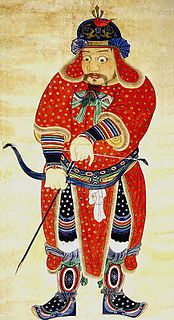
Yun Gwan was a general of Goryeo who was known for training a seventeen-thousand man army and leading it to victory against the Jurchens tribes.
The army was put together to fight the Jurchen who were putting pressure on Goryeo's northern borders. The Goryeo infantry had a hard time resisting the strong Jurchen cavalry.
The Jurchen, also known by many variant names, were a tribal confederation of Tungusic and affiliated peoples, subdivided into three major groups: Jianzhou Jurchens ; Wild Jurchens, often known as the Yeren ; and Haixi Jurchens, who traditionally inhabited the region of Manchuria. The Jurchen established the Jin dynasty, whose empire conquered the Northern Song in 1127, gaining control of most of North China. Jin control over China lasted until their 1234 conquest by the Mongols.


